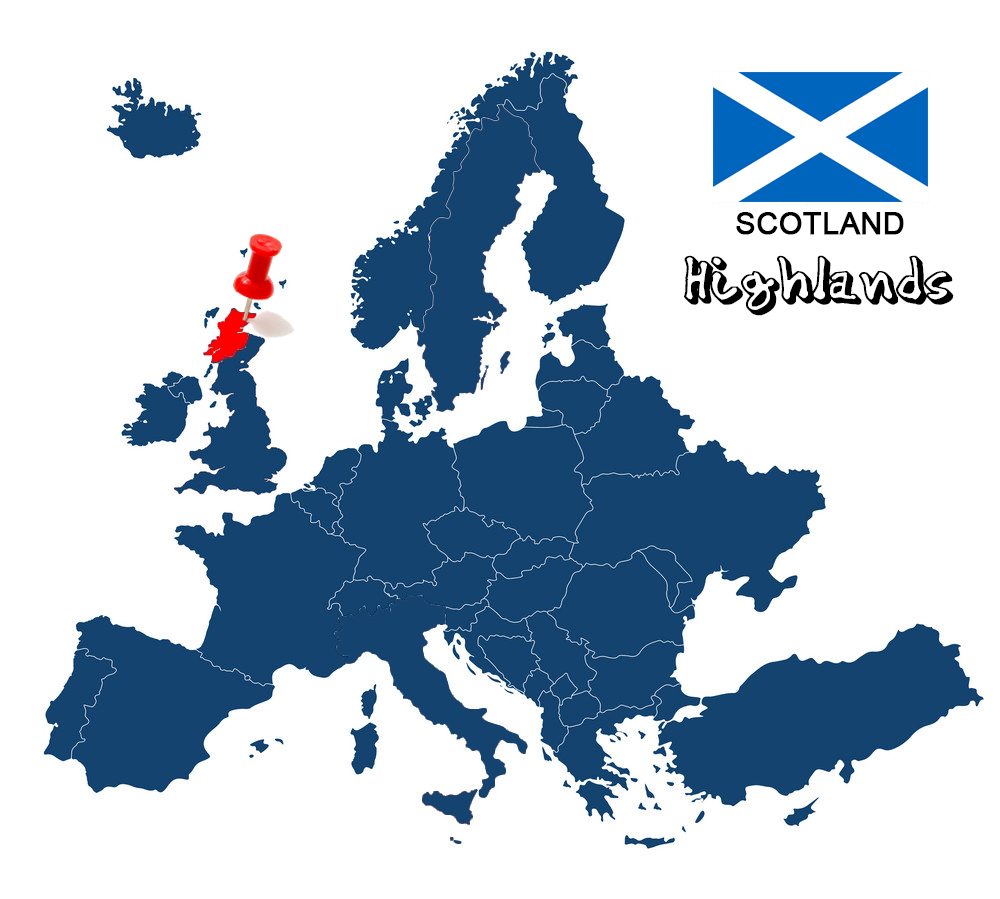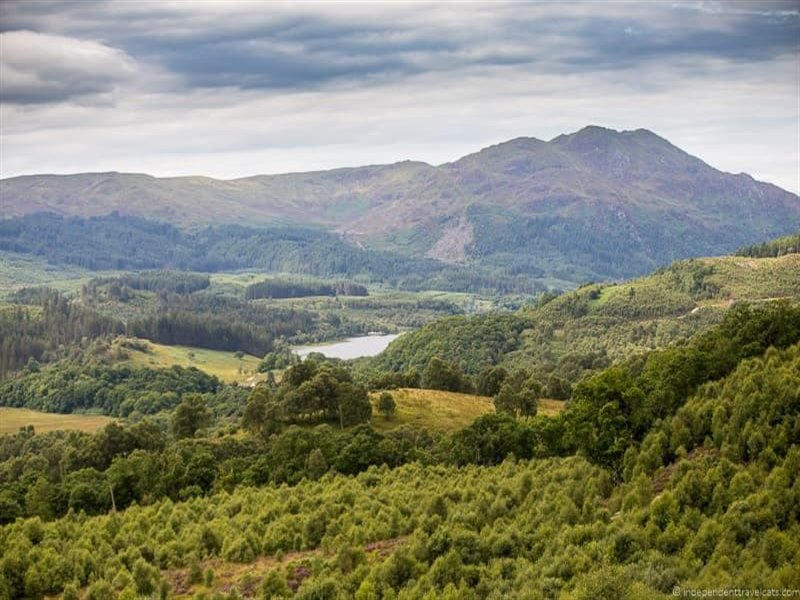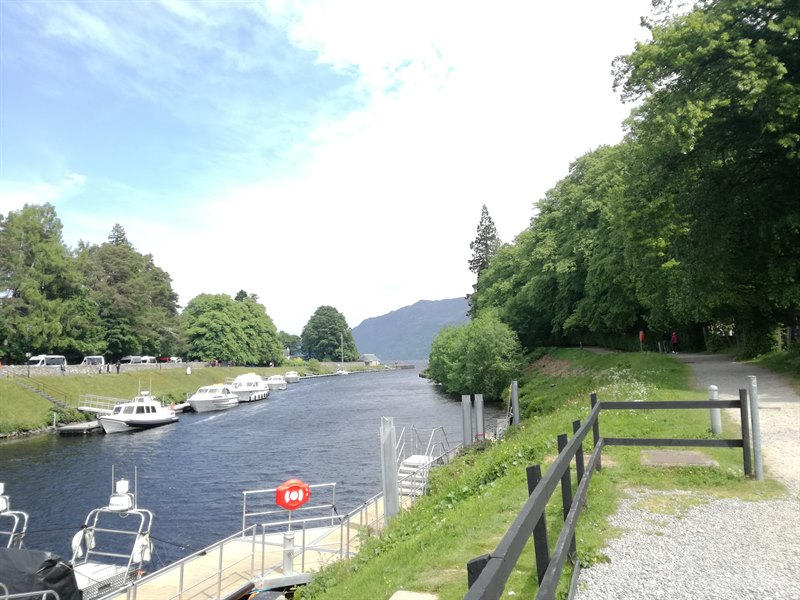
This particular spot is the most beautiful place I have ever seen with my own eyes, and its natural beauty is not easily described in words. It's like you've sprung up in a fairytale-like you're a protagonist in "the Lord of the Rings," or you've died and been taken to Heaven. You cross hundreds of miles and you don't even see a human. The only thing that reminds you of the human presence is some settlements, which on the map are presented as villages, but they do not even have shops. A journey that is different from the others.
A few words about the city
Scotland is mainly divided into two regions, the Highlands and the Lowlands. The Highlands are the northernmost point in Britain and one of the most sparsely populated parts of the world. There you will find the most typical example of genuine Scots. The few people living in the mountains (Highlanders) follow the customs and traditions of the past, while maintaining the Scottish language with the numerous idiomatic elements, in contrast to the "Lowlanders", who received English influence. It is a magical route between hills and mountains, lakes and streams, waterfalls and the sea, lush meadows full of cows and sheep, scattered castles, farms, and many whiskey distilleries. Driving is very difficult, as the roads are narrow and inaccessible, so you move alone hopelessly slowly. Besides, the humidity reaches 95% (!) and so the weather is unpredictable from minute to minute, with fog and bad weather even in August. But none of this will bother you for a second, as the landscape is so pristine and seductive that it leaves no room for doubt. So I will try to present to you the Highlands through my own eyes and share with you what I think someone should see visiting the region for the first time.
The Trossachs National Park- Loch Lomond
Trossachs National Park is the gateway to the North and by many is called "Miniature of the Highlands". It is a park, centered on Loch Lomond and several ranges of hills, lakes and wild animals, such as deer, wildcats, golden eagles, hawks, etc.. It was the first of two national parks established by the Scottish Parliament in 2002, with the second being Cairngorms National Park far north. Trossachs Park is the fourth largest in Britain, with a total area of 1,865 square kilometers and a length of about 350 kilometers. It includes 21 Munros, mountains over 3,000 feet high (including Ben Lomond, Ben Lui, Beinn Challuim, Ben More and two peaks called Ben Vorlich), 19 Corbetts (mountains between 2,500-3,000 feet), two forest parks (Queen Elizabeth and Argyll) and 57 specific nature conservation sites.
Close enough is the town of Callander, perhaps the last point to Inverness, where you will be able to find Bank, Post Office, cafes, and restaurants. So make a stop at the local bakeries and pick up local delicacies for the route.

Glen Coe
The first big stop in the Highlands should be Glen Coe. It is a gorge of volcanic origin, one of the most beautiful and impressive places in Scotland. The narrow and steep gorge, surrounded by wild mountains and almost frightening with its grandeur. Glen Coe took its name from the river Coe, which runs through it, and is known as the" gorge of weeping" because of a massacre that took place there in 1692. When the English captain Robert Campbell and his soldiers were hosted by the MacDonalds, in the middle of the night the soldiers turned against their hosts, killing 37 people and over 40 women and children, destroying their homes and property. The reason was that Alasdair MacIain, chief of the MacDonalds, had not sworn fealty to King William III of England. Glen Coe is considered the home of Scottish Mountaineering and is popular with hikers and climbers.
Fort William
The third stop is at Fort William, a fishing village at the foot of Mount Ben Nevis, Scotland's highest mountain peak. This village is located at the western end of the Great Valley or Great Glen and is the second largest settlement, behind the Inverness, with a population of 10,459 inhabitants! Fort William is an important tourist center, with Glen Coe to the south, Aonach Mor, an impressive mountain to the east, and Glenfinnan, a picturesque village to the west. There are four lakes in the area, one of which is Lake Linnhe. The four lakes are connected by the Goodwill Canal, built by Thomas Telford in 1822. Due to its geographical location, it is an ideal place for climbing and hiking, and from there begins a famous downhill cycling route.
Fort Augustus-Loch Ness
Next is Fort Augustus, a small village built in an idyllic location on the shores of Lake Ness (Loch Ness). The village is located in the Great Glen and is known for the Caledonian Canal that connects Lake Ness with the three other lakes in the region, thus making it possible to transport boats from East to West. Fort Augustus has a population of about 646 inhabitants (!) and its economy is highly dependent on tourism.
The reason Fort Augustus is famous and many tourists rush to visit it, is mainly the huge lake Ness. It is the second largest in Scotland, after Loch Lomond and the home of the homonymous monster. The first references to "Nessy", as its nickname is, according to legend date from the 6th century AD. Legend says that at that time, St. Columbus miraculously saved the life of a man from this. Many other reports have followed to this day, but underwater research conducted in 2003, using sonar, failed to locate the legendary reptile. Don't forget to take the boat, which makes the tour of the lake and maybe you can see Nessy with your own eyes. That's why in Fort Augustus you will find several restaurants, cafes, hotels and shops with tourist products.

Eilean Donan
In the western part of the Highlands, you will find one of the most beautiful castles in Scotland, the Eilean Donan, built on an islet on Lake Duich. Surely you have seen it in photos, movies, or on TV since the setting is very idyllic and is used constantly. Eilean Donan simply means "Donnan's Island" and was named after Eigg's Donnan, a Celtic saint in 617. Donnan is said to have founded a church on the island, although there is no trace of it. The castle was founded in the thirteenth century and became a stronghold of Clan Mackenzie and their allies Clan MacRae. In the early 18th century, the Mackenzies' involvement in the Jacobite uprisings led in 1719 to the destruction of the castle by government ships. The ruins were rebuilt in the twentieth century, along with a pedestrian bridge that connects the island with the mainland. Today the castle is visitable and the entrance costs 10 pounds.
Inverness
Inverness is the largest city in the region, with 46,869 inhabitants, with a quarter of the Highlands population living in or around it. The name Inverness in Scottish means mouth of the River Ness and comes naturally from the river of the same name, which crosses the city and flows into Loch Ness. It is the administrative center of “The Highland Council” and is considered the capital of the Highlands. It is one of the fastest growing cities in Europe, and recent research ranks it among the happiest cities in the United Kinkdom. The history of the city is rich and includes legends of William Shakespeare's famous tragedy about Macbeth, the fort that he built there, and the proclamation of Inverness into a Royal City by King David in the 12th century.
Worthy of attention in the city are Inverness Castle, which was built in 1835 right on the site of the medieval castle that was located there, the University of the Highlands and Islands and the Inverness Cathedral, dedicated to St. Andrew. The temple is typical for its peculiar square steeples. There is also the Old High Church on the river bank, whose tower dates back to medieval times and is the oldest building in the city. The city’s museum, Inverness Museum and Art Gallery, hosts finds from the first era of life in the area, about three million years ago. It underwent a major renovation in 2006, and now also contains many works of art on loan from the National Museum of Scotland in Edinburgh. Documents and interesting facts about the existence (or not?) of the Loch Ness monster, the most famous monster in modern history, can be found at the Loch Ness Exhibition Centre. Admission costs 7,95 pounds.

Cairngorms National Park
As I mentioned above, Cairngorms National Park is the second of the two parks established in Scotland in 2002. It is the largest park in the United Kingdom, covering an area of 4,528 square kilometers, called by many as "the heart of the Highlands". The scenery is enchanting with mountains, waterfalls, forest trails, rivers, lakes, hot wildlife spots, friendly villages and distilleries more than you can imagine. Five of the United Kingdom's six highest mountains are located in the park, making the area an ideal winter ski resort. Around and inside the park you will find several attractions such as castles (Ballindalloch Castle, Braemar Castle, Balmoral Castle and many more), museums, botanical gardens, distilleries and you will have the opportunity to try other activities such as horse riding, rafting, shooting, bungee jumping. etc..
Last stop the Victorian town of Pitlochry, in the southern part of the Cairngorms Park. The town became widely known when Queen Victoria visited it and wrote that it is the most beautiful little town she has ever seen. Since then, it is a popular destination and because of its location, ideal for walkers.
How to go
We can barely meet some small towns in the Highlands; there could be no airport in the area. To approach the place you must first reach the northern part of Great Britain, and more specifically Scotland. The best option is to fly to Edinburgh via Jet2. With proper planning, one can find tickets starting from 122€ round trip. From then on, you can either follow one of the excursions to the Highlands or rent a car and head there yourself.
Where to stay
Highlands is a large area, and if you want to explore it correctly, you will need quite a lot of time and many days. This means that you may have to stay in more than one accommodation. My initial suggestion is to stay in Fort Augustus and Loch Ness Monster Pods. These are some small rooms, caravan type, near Loch Ness Lake. Then I would suggest finding something in Inverness, my suggestion is the Old North Inn Hotel. A four-star hotel just outside the city, offering excellent value for money.
How to move
If you choose the hard way of approaching the mountainous regions of Scotland with your own vehicle, you need to be very careful. In Highlands, as in the rest of Britain, driving is upside down and all roads are narrow, just enough for a car. I'm talking about roads through mountains and ravines, steep and desolate, where the signs are negligible and the signal on the cell phone lean. Of course, with a map and goodwill, it is difficult to get lost! However, I think that to live the experience of the Highlands for good, you have to be brave and do it. The route will compensate you!
What to eat
With such a wealth of excellent local ingredients, it is not surprising that there are many beautiful places in the area that serve delicious dishes, thus proving their gastronomic value. Of course, you can go several kilometers to find one and you have to be very careful because many of them (if not all) close at 3 in the afternoon. Do not hesitate to sit in one of the beautiful inns of this remote area and try the local dishes with the locals.
The traditional Scottish dish is called haggis and it needs "guts" to try it. It is a form of minced meat made from sheep's intestines (heart, liver, and lungs), along with various spices and all this is cooked in the stomach of the animal. I know that at first glance it doesn't impress, but it's delicious. No doubt you should also try the famous Scotch eggs, boiled eggs that are wrapped in sausage meat, breaded and fried in hot oil. A dish you have to avoid if you have cholesterol or if you don't want to get it. In the Highlands there are also excellent meats, so don't forget to taste a well-cooked steak or some specialty of each store. Finally, along the way, you will find many whiskey distilleries and so you will have the opportunity to taste the authentic "Scotch".
Useful information

In the United Kingdom, while still in the European Union, we travel with a new type of Passport or Police ID, where the details are written in Latin characters.
In Highlands the language used is English, but the Scottish accent is special, as the locals speak heavily and cut syllables, so you may often find it difficult to understand exactly what they mean. Of course, everyone is very polite and accommodating and will help you, as they appreciate that you speak their language.
The country's currency is the British Pound and its exchange rate is currently 1€=0.9001 £
Turn your money either in Greece or in small shops in another city, as on your way to the Highlands you will not find an exchange market.
The Highlands are two hours behind Greece (GMT 0).
Obviously, there is no Greek consulate or embassy around the Highlands, so if you need anything you can contact the Greek Unpaid General Consulate in Edinburgh, located at Queen's Crescent 12 EH9 2 AZ and its phone number is +44 131 6205496 or this at Glasgow, located at Kirklee Quadrant 1 G12 OTR and its phone number is +44 141 3340360.
The weather in Northern Scotland is unpredictable, with snow, fog, rain, and humidity reaching 95%. So, do not plan a visit in the winter months, you are more likely to be excluded somewhere in between. The ideal time to visit is spring and summer when the weather is better and the route is more easily accessible.
Recommended excursions → Glasgow, Edinburgh

If this article seemed interesting or contributed to your quality information, then you can like my facebook page: o_thessalonikios or follow me on instagram!
Mouzakidis Pantelis








